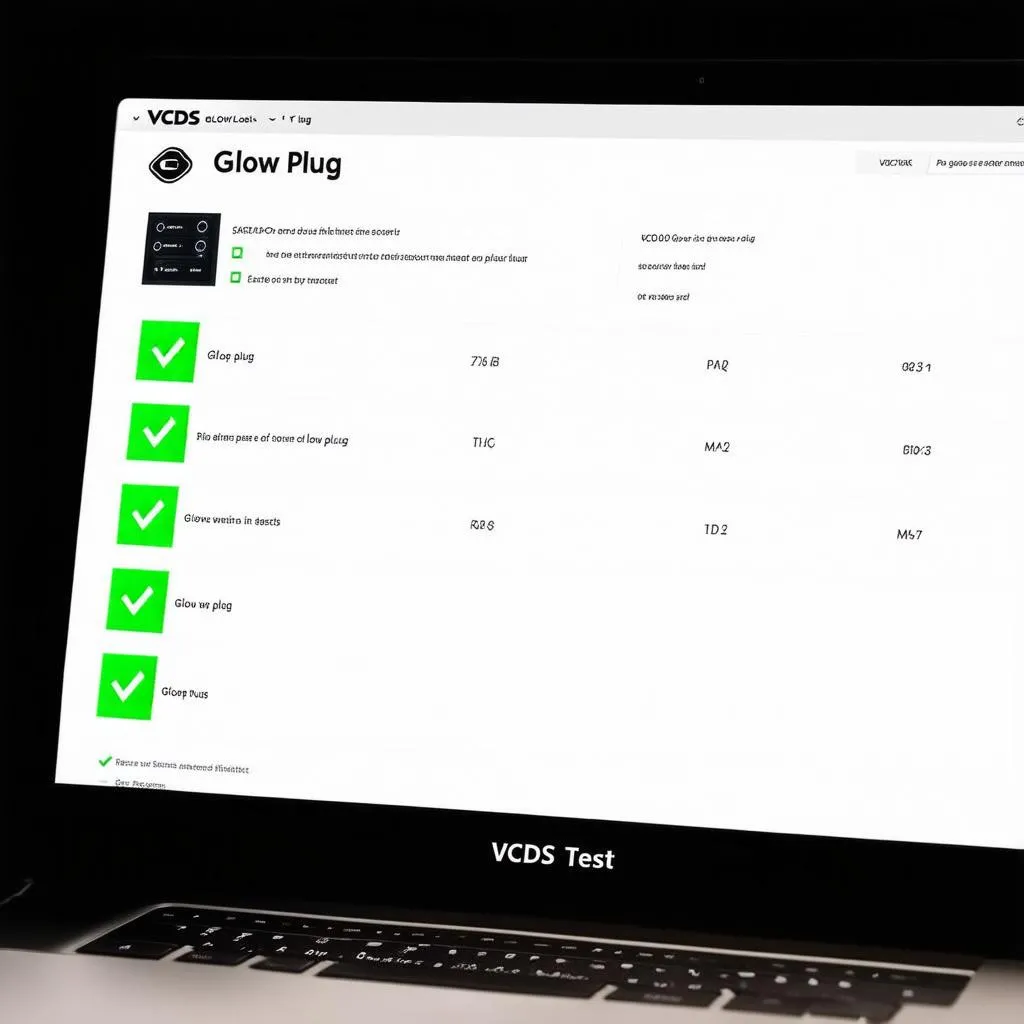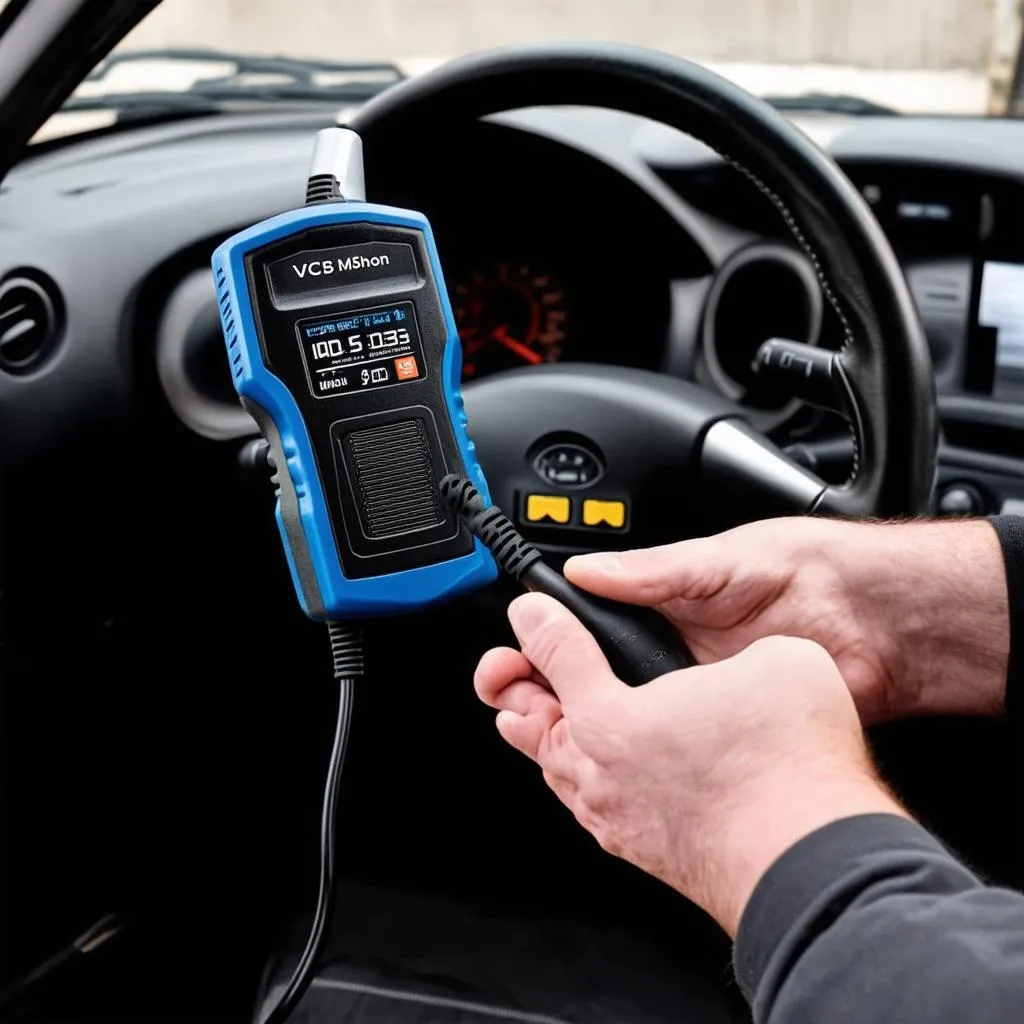Mastering the VCDS Glow Plug Test: A Comprehensive Guide
“A stitch in time saves nine,” or so the saying goes. This wisdom rings especially true when it comes to your car’s engine. Imagine this: It’s a frosty morning, and your diesel engine struggles to start. The culprit? Faulty glow plugs. Before you find yourself stranded, let’s delve into the world of the Vcds Glow Plug Test, a powerful tool for diagnosing and ensuring the health of your diesel engine.
What is a VCDS Glow Plug Test?
The VCDS, short for “VAG-COM Diagnostic System,” is a powerful diagnostic software suite designed for Volkswagen Audi Group (VAG) vehicles. One of its many functions is the glow plug test. This test utilizes the VCDS interface to communicate with your car’s Engine Control Unit (ECU), allowing you to check the functionality of your glow plugs without even lifting the hood.
Think of it as a virtual mechanic, running diagnostics on a critical engine component that’s often overlooked until it’s too late.
Why is the VCDS Glow Plug Test Important?
In the realm of diesel engines, glow plugs are the unsung heroes of cold starts. These small heating elements play a vital role in preheating the combustion chamber, ensuring that your engine fires up smoothly, especially during colder temperatures.
A faulty glow plug can lead to:
- Difficult starting: This is the most common symptom, particularly noticeable in cold weather.
- Rough idling: Until the engine warms up, a failing glow plug can cause uneven engine operation.
- Increased emissions: Incomplete combustion due to a faulty glow plug can lead to higher emissions.
- Reduced fuel economy: Your engine might compensate for poor combustion by using more fuel.
Regularly performing a VCDS glow plug test helps you catch these issues early on, saving you from potential headaches and costly repairs down the line.
How to Perform a VCDS Glow Plug Test
Performing a VCDS glow plug test is a straightforward process, even for those who aren’t mechanically inclined. Here’s a simplified breakdown:
- Connect your VCDS interface: Plug the VCDS cable into your car’s OBD-II port, usually located under the dashboard on the driver’s side.
- Launch the VCDS software: Turn on your ignition (but don’t start the engine) and open the VCDS software on your laptop.
- Select “Engine” Control Module: Navigate through the software’s menu to access the engine control module.
- Go to “Output Tests”: This option allows you to run specific tests on various components, including the glow plugs.
- Initiate the Glow Plug Test: Follow the on-screen prompts to begin the test. The software will send a signal to activate your glow plugs.
- Observe the Results: The VCDS software will display the status of each glow plug, indicating whether it’s functioning correctly or if there’s a fault.
While the process itself is quite simple, it’s important to consult your vehicle’s specific repair manual or seek guidance from a qualified mechanic if you’re unsure about any step.
Interpreting the Results
The VCDS software typically provides clear and concise results for your glow plug test. You might see messages like:
- “OK” or “Passed”: This indicates that the glow plug is functioning within the expected parameters.
- “Open Circuit” or “High Resistance”: This suggests a break in the electrical circuit, most likely a faulty glow plug that needs replacement.
- “Short to Ground” or “Low Resistance”: This indicates a short circuit, which could mean a wiring issue or a damaged glow plug.
Remember, a single faulty glow plug can affect the performance of your entire engine. If the VCDS test reveals any issues, it’s best to address them promptly.
 VCDS Glow Plug Test Results
VCDS Glow Plug Test Results
Beyond the Technical: A Holistic Perspective
Interestingly, the importance of timely maintenance and preparedness resonates not only in the automotive world but also in various spiritual practices. In many cultures, maintaining harmony and balance in all aspects of life, including our vehicles, is seen as crucial for a smooth and prosperous journey.
Just as a well-maintained engine runs smoothly, taking care of our responsibilities and addressing issues promptly can bring a sense of peace and order to our lives.
FAQs about VCDS Glow Plug Test
Q: How often should I perform a VCDS glow plug test?
A: It’s generally recommended to test your glow plugs at least once a year, ideally before the onset of cold weather.
Q: Can I perform a VCDS glow plug test myself?
A: Yes, with the right tools and some basic knowledge, you can perform this test at home. However, if you’re uncomfortable working with car electronics, it’s best to consult a professional.
Q: What should I do if the VCDS test shows a faulty glow plug?
A: It’s best to replace faulty glow plugs as soon as possible to avoid further engine problems. Consult your vehicle’s repair manual or seek advice from a qualified mechanic for the correct replacement procedure.
Exploring Further
Looking to dive deeper into the world of car diagnostics? Check out these related articles:
Need Help with Your Diesel Engine Diagnostics?
We understand that car troubleshooting can be daunting. If you’re facing any challenges with your vehicle’s diagnostics, don’t hesitate to reach out. Our team of auto repair experts is available 24/7 to assist you. Contact us on WhatsApp at +84767531508 and let us help you get back on the road with confidence.
 Mechanic Connecting VCDS Cable
Mechanic Connecting VCDS Cable
Keep Your Engine Running Smoothly
Just as a well-tuned orchestra relies on the harmonious interplay of its instruments, a healthy engine depends on the proper functioning of all its components. Regularly performing a VCDS glow plug test is a simple yet powerful way to ensure that your diesel engine starts smoothly and runs efficiently, keeping you on the road and ready for whatever adventure lies ahead.
We encourage you to share your thoughts and experiences with VCDS glow plug tests in the comments below. Have you encountered any challenges or discovered helpful tips? Your insights might just help a fellow car enthusiast!
